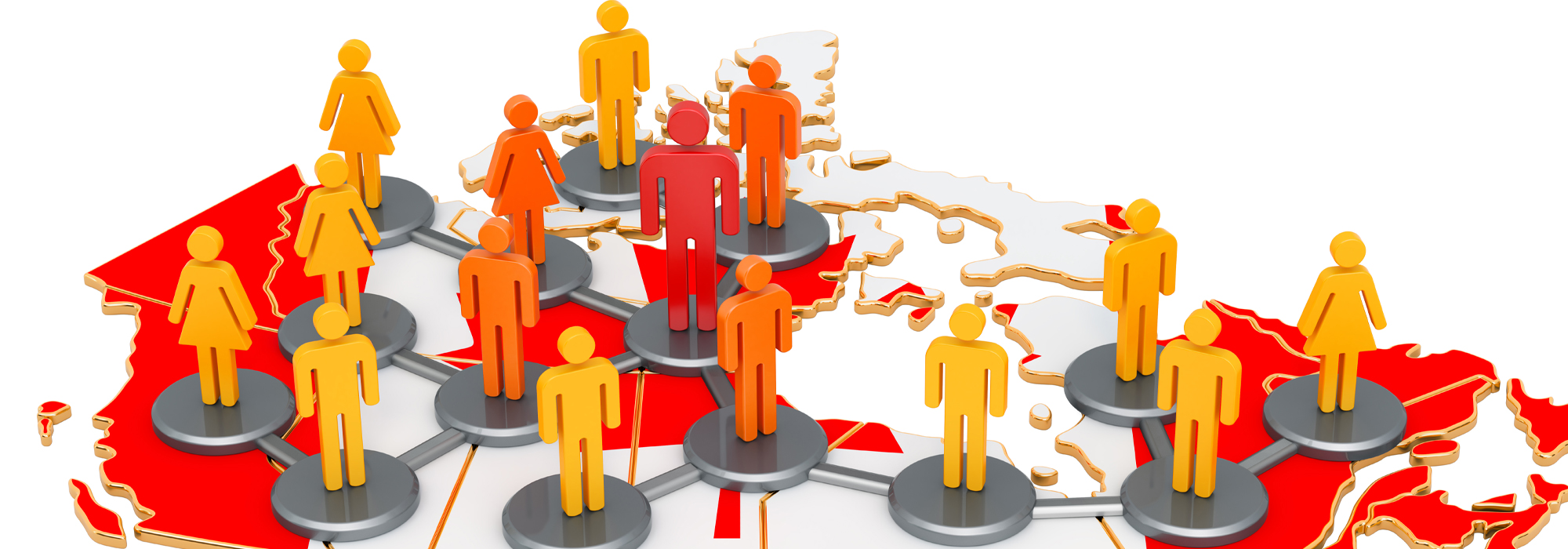
A thoughtful, well-managed and balanced system for contact tracing is essential for preserving our core values of privacy, freedom, equity and safety during the COVID-19 pandemic. The system must account for and guide individuals, employers and the government in enacting appropriate action at each step of this process. The humanity of compassionate case managers trained in the process should be at the centre of the system. No short-cuts are tolerable with the stakes this high.
The implications of contact tracing for privacy and for employee vulnerability have not been fully worked through. Contact tracing will change the responsibilities of employers to equity given that immediate isolation of COVID-exposed co-workers is critical to the prevention of resurgence. For example, we know that frontline workers are disproportionately members of vulnerable groups by gender, race and income status.
What are the implications of contact tracing for an employer’s allocation of responsibilities given that frontline workers are more vulnerable to COVID-19 than other employees? The questions are profound. Should a company be able to reallocate work from, for example, older employees to younger ones if older workers are more likely to contract the disease?
Finally, contact tracing has the potential to change the direction of innovation. This could occur as companies receive sensitive private information about employee health, contacts and social interactions for a range of reasons. Chief among them is that an employer might seek to use the newly acquired information to control, monitor, influence or even automate the way that people within the organization interact. These interventions, perhaps taken with the purpose of making the organization more efficient, have the potential of stifling creativity. Long-overdue changes to build resilience, renew products and offer novel services may not be pursued if employers pursue data-driven opportunities to micromanage employees in the name of efficiency.
Profound implications for privacy
Management of the infectiousness of each newly diagnosed, COVID-positive person will be different during the reopening phase than it was during the shutdown. The first difference is that each of us must vigilantly self-monitor for symptoms. At the very first sign of COVID-19, we are expected to self-isolate, contact our physician and let government officials know the names people we’ve interacted to enable the contacting of those individuals to request them to quarantine.
Pulling this off will require a major change in our culture. There can be no hesitation, embarrassment, or fear associated with naming names. To keep the virus in check, you can expect mandatory symptom reporting and random temperature checks in places where spread might occur. With contact tracing, we will each be required to submit a list of those we have been in contact on a moment’s notice.
A second difference is that we each must be prepared to respond immediately to a contact-tracing call from a public authority saying that we’ve been exposed. Rapid isolation of potential cases is a critical feature of effective case management after reopening. Targeted quarantine can arise for anyone at any time. Any of us might receive a call, text or email telling us that we must immediately quarantine at home because we’ve been in contact with someone over the last three days suspected of being COVID-positive.
The two facets of contact tracing – namely outbound contact-naming by those suspected of being ill, and inbound quarantine orders for those named – have profound implications for our privacy and freedoms. They change our relationships with friends, neighbors, employers, schools and governments. And yet success at contact tracing is central to the sustainability of reopening.
There is variation across jurisdictions in strategies for accomplishing contact tracing that rest on different ways of thinking about privacy and freedom over individual activity. In China during the pandemic, citizens interested in gaining access to public services were required to use a downloadable app to record information about travel history and physical health. If you had contact with someone COVID-positive or if you traveled through a high-risk place, then electronic tokens transmitted to your app automatically and often without your knowledge.
Codes generated by the app had to be flashed at entry points and generate an acceptable “green” (rather than yellow or red) response for you to gain entry. Yellow signals exposure and red signals that you must stay home. Many Chinese businesses now also use the system to control admission.
A system in which the government owns and controls sensitive data and manages both contact-naming and quarantine orders – would be unacceptable in Canada, the US, the European Union, and many other countries where privacy and individual freedoms are constitutionally privileged.
To resolve the problem of efficient outbound contact naming in Canada and elsewhere, several working groups have advocated for app-based systems in which token data is owned by phone-holders rather than by the government. Apple and Google have collaborated to support the sharing of tokens across apps running on their operating systems. Some recommend that installation of the app be mandatory, although it’s unclear that the recommendation to quarantine or isolate could be enforced under this model.
Control falls to schools and employers
Because ownership of a phone itself is not mandatory in these jurisdictions, the viability of this approach is questionable. A voluntary “opt-in” system would only be effective if enough people chose to participate. This is because false “greens” due to a lack of information could encourage softening of social distancing and other preventative action with potentially disastrous consequences.
So that leaves many governments turning to schools and employers to manage contact tracing. Specifically, governments may expect employers to test employees regularly, to implement systems for contact-naming, and to discharge exposed employees immediately into quarantine. This would convey to the employer an unprecedented amount of power and control over the lives of employees.
Immediately, it would provide your employer with information about the people with whom you have close contact. It would allow the employer to name who must be isolated as well as control who is on the frontline.
An immoral employer could direct an employee to interact with someone at risk of being positive and then force isolation upon that person.
The implications are complicated by the fact that some employers are moving toward a system of teams in which employees alternate days of the week in groups at work. This system has two main benefits. First, it reduces the number of contacts that each person might have, which has the effect of reducing vulnerability to infection across the whole group. Second, the work-sharing arrangements required to implement alternation means that if one group is COVID-exposed and must isolate, the other group can take over all responsibilities for showing up at the worksite. The main problem with this approach is that it is too expensive and complicated for most employers to implement effectively.
Each of these risks and problems constitute significant new costs arising from employing people to do jobs that can be automated one way or another. Because COVID-19 raises the costs of employing people, employers have a greater incentive either to automate jobs or to eliminate old processes altogether. In situations where companies elect to keep employees, they may reduce wages, retain only the healthiest, and exploit sensitive data to disadvantage the worker.
Long-term consequences for the distribution of wealth
The consequences of these possibilities for innovation and inclusive growth are profound. Many companies will be motivated to implement analytics, artificial intelligence, machine learning and other automation processes not because the returns on these investments are complementary to labor productivity, but rather because they are substitutes for labor. This is a fundamental change in the motivation for investment in these technologies with long-term consequences for the distribution of wealth in society.
COVID-19 disproportionally affects those who are in non-privileged groups – racial minorities, the disabled, older workers and others. Employers forced to implement contact tracing would face enormous incentives to shift work away from those who are most susceptible which could greatly exacerbate structural inequalities.
Under contact tracing systems, the employer has incentives to keep workers as isolated as possible, which could greatly affect the learning and knowledge transfer that arises in diverse teams. Requiring contact tracing of employers fundamentally changes the economics of innovation and makes vulnerable employees even more vulnerable.
We have to find another way to accomplish contact tracing that does not involve short-cuts on basic principles of privacy, freedom, equity and safety. Employers, governments and the public should cooperate to implement a comprehensive system with multiple facets of interaction between health authorities, employers and those infected by the virus.
This system would provide individuals with privacy, guidelines for informing employers and access to case-management resources through the healthcare system rather than the employer. Government-employed case workers would manage contact tracing with the employer according to guidelines developed jurisdictionally to identify those potentially exposed at the workplace.
Employers that comply would be protected from prosecution. Crucially, information about a worker’s health status and contact list would be managed according to principles that reflect established practices for the retention of such sensitive information. Employers would be restricted from acting on that information beyond the uniform guidelines. A successful token-based app could be used to provide patients with information on personal health status, but it would be only one in a portfolio of tools for self-diagnosis. Case managers in the health system would be the primary mechanism through which contact tracing occurs.
Companies are in crisis due to reduced consumer demand, challenges of remote work and amplified uncertainty. The crisis will be worsened if governments saddle them with primary responsibility for managing contract tracing. What is needed is a comprehensive framework for collaboration between employers and governments to accomplish contract tracing without compromising important rights and without creating perverse incentives for employers to reduce employment. Getting this right is among the most important challenges that we face, and we cannot succeed unless employers and governments work together to align incentives with what is best for us all.
This article is part of the Building a More Inclusive Innovation Economy After the Pandemic special feature.










